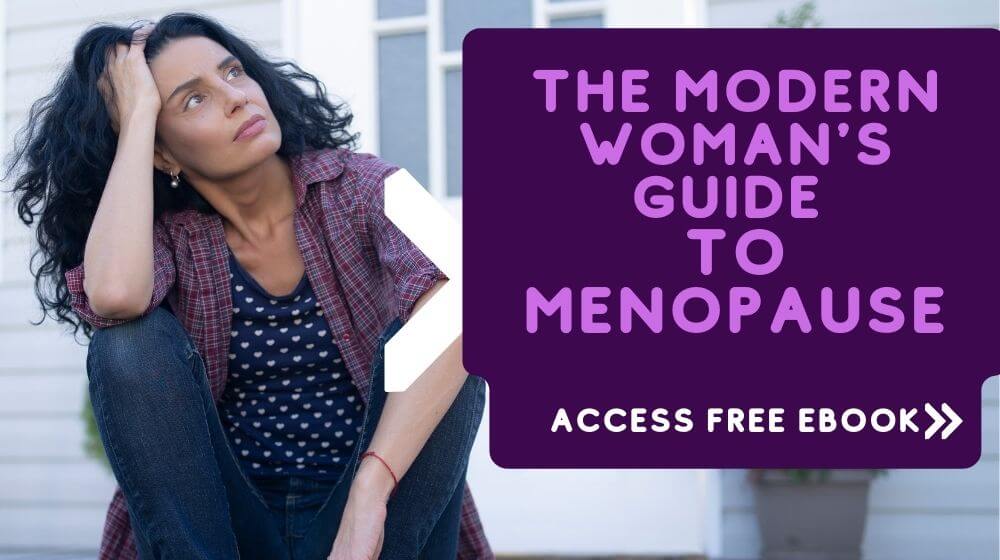Menopause is a natural part of aging for women, but it can also involve some uncomfortable symptoms. One of the most common menopausal complaints is joint pain. This type of menopause-related joint pain can range from mild to severe and can interfere with daily activities. To better understand menopausal joint pain, it’s important to recognize what causes it, how it’s diagnosed and treated, and possible strategies for prevention.
Understanding menopause joint pain is key to finding ways to ease its impact on your life.
Definition of menopause joint pain
Menopause joint pain is an uncomfortable and sometimes disabling experience for many women going through menopause. It results from hormonal changes which cause inflammation of the joints that can be experienced as stiffness, swelling, and tenderness. Joint pain during menopause can affect any joint, but it most often occurs in the hands, wrists, elbows, shoulders, hips and knees.
While menopausal joint pain can disrupt your day-to-day life, being aware of its potential causes and seeking treatment options may help to reduce its impact.
Symptoms associated with menopause joint pain
Menopause joint pain can be an uncomfortable and significant symptom of menopause. It is typically felt in the bones of the wrists, hips, and fingers in particular, although it can occur anywhere throughout the body.
Some symptoms of menopause joint pain may include stiffness or aching, swelling around joints that cause difficulty with movement, inflammation of joints similar to arthritis, and painful clicking when moving certain joints.
Diagnosis and Treatment
Menopause joint pain can be a frustrating symptom of menopause, and it’s important to understand what causes it so that the best possible treatment can be found. While menopausal joint pain is usually caused by hormonal imbalance or thinning bones, some underlying medical conditions may also cause menopausal joint pain.
Diagnosing menopause joint pain can be a complex process that differs from patient to patient, depending on the medical history and symptoms they are experiencing. Firstly, your doctor will conduct a physical examination in order to identify any inflammation or abnormal movement of your joints. Your doctor may also order blood tests and X-rays if it’s suspected that you’re dealing with menopause joint pain. This can help detect any underlying issues that could be causing disruptions in your musculoskeletal system. Additionally, imaging scans may be suggested although this is rare unless the diagnosis is proving difficult.
Treatment for can include simple self-care measures, such as getting enough rest and maintaining a healthy weight, along with medicated creams, medications, muscle relaxants, or even hormone replacement therapy.
Physical therapy can also be used to increase muscle strength around the affected joint, reduce stress levels and participate in activities that help manage menopausal symptoms.
In some cases, medications like nonsteroidal anti-inflammatory drugs or prescription hormones may also be recommended.
Prevention Strategies
The best way to prevent menopausal joint pain is by engaging in regular exercise, eating a balanced diet and paying close attention to your weight. Exercise and a healthy diet will help maintain proper muscle and joint health while also combating the other issues associated with menopause such as fatigue, changes in sleep patterns and mood swings.
Additionally, it’s important to incorporate stretching exercises into your daily routine to improve flexibility as well as posture. Stretching can help reduce menopause joint pain by keeping your joints flexible and easing the strain on affected muscles.
Finally, practising mindfulness and relaxation techniques can also be beneficial for menopausal women dealing with joint-related menopause symptoms. Holistic therapies like yoga, tai chi and qigong have been known to improve physical, mental and emotional well-being, making these activities wonderful preventative strategies for menopausal women suffering from menopause joint pain.
Lifestyle changes to reduce menopause-related joint pain
Menopause joint pain can affect your quality of life. Luckily, it is possible to reduce menopause-related joint pain with some lifestyle tweaks. Regular exercise helps build muscle strength and lubricate joints, reducing the pain menopausal women may be feeling in their joints. Eating a healthy and well-balanced diet rich in nutrients is also key for reducing headaches, muscle aches, and other menopause-related discomforts.
Additionally, drink plenty of water throughout the day to stay hydrated and help flush out toxins from your body that may contribute to joint pain.
Incorporating anti-inflammatory foods into your diet also helps. These include vegetables like kale and spinach, as well as fish rich in omega-3 fatty acids like salmon or tuna.
Taking time for yourself is also important; relaxation techniques such as deep breathing exercises and yoga can help relieve menopause-related joint pain as well. Ultimately, following a healthy lifestyle is the best way to handle menopausal joint pain. Simple adjustments like these can make a world of difference in menopause-related joint pain!
Medical interventions that may help prevent menopausal joint pain
There are medical interventions can provide relief, so it is important to speak with a health provider about how to best manage menopausal joint pain.
Recent treatments have included hormone therapy, along with natural and over-the-counter remedies such as dietary supplements, exercise programs, and other lifestyle changes. Additionally, some medications may be prescribed.
Many menopausal women report a significant reduction in their menopause joint pain after implementing one or more of these interventions. Consulting a qualified medical professional to develop an appropriate plan tailored specifically to your needs can ensure the most optimum results.
Will joint pain from menopause go away?
Everyone experiences menopause differently. The good news is that menopausal joint pain usually dissipates on its own on time. In some cases, lifestyle changes like reducing stress, getting enough exercise and rest, and eating a balanced diet may help reduce or even eliminate menopause joint pain over time.
What supplements help menopause joint pain?
There are several supplements that menopausal women can take to help reduce menopausal joint pain. Fish oil contains omega-3 fatty acids that have natural anti-inflammatory properties, which can greatly alleviate menopause suffering. Vitamin D is also beneficial as it helps keep bones strong. Additionally, magnesium is great for calming nerves and improving the body’s response to stress during menopause. Turmeric, Ginger and Glucosamine and Chondroitin Sulfate can also help joint pain.
Final thoughts
Many solutions can be carried out to help ease the pain of menopause joint pain. However, the most important thing is to talk to your doctor so they can help you find the best course of treatment for you. With their help, you should be able to find relief from your joint pain and get back to enjoying your life again.





